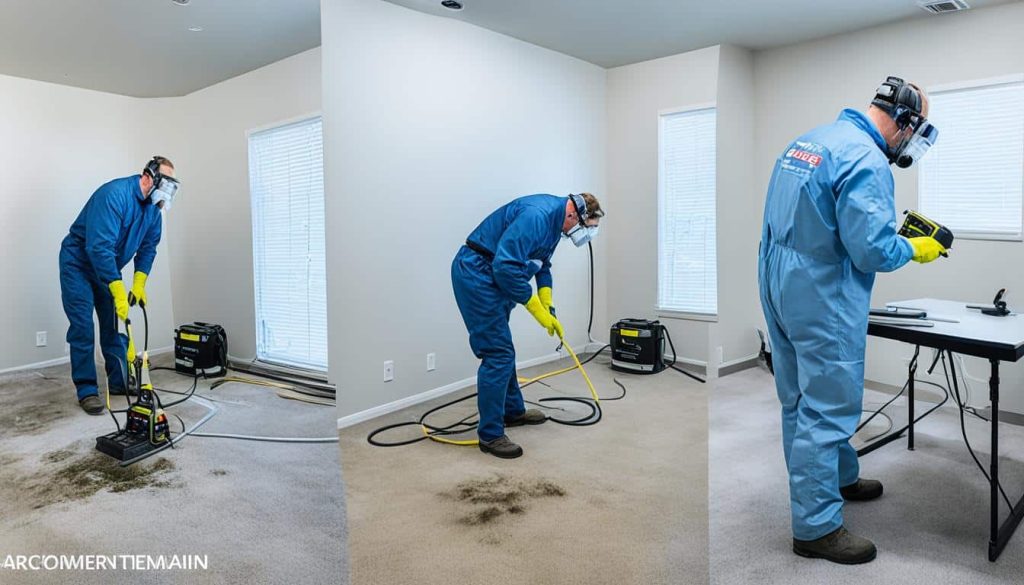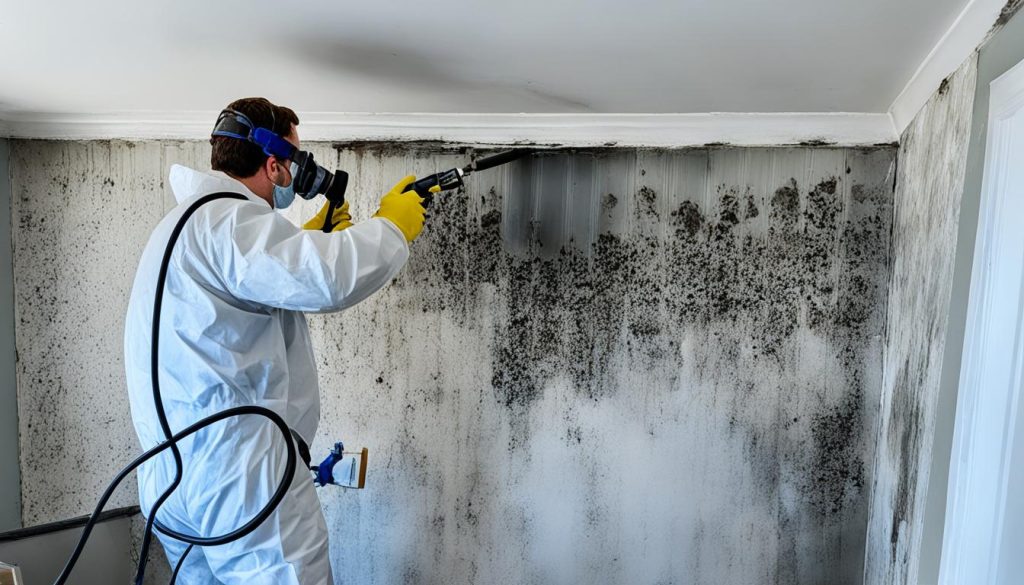In my previous article, I addressed how water accumulation in crawlspace moisture can significantly contribute to mold growth. Crawl spaces, due to their typically limited airflow and high humidity levels, create an environment ripe for mold proliferation. This issue is further exacerbated during the warm summer months when air conditioning systems generate additional moisture. Understanding the sources of moisture and implementing effective preventive measures is crucial for maintaining a healthy home.
Array of Solutions, a trusted name in mold removal in Greenville South Carolina since 2007, stands ready to tackle your mold woes. With our expert mold inspection Greenville services and EPA-Registered credentials, we’re equipped to detect, remove, and prevent mold growth in your home or business.
Table of Contents
The Role of Crawlspace Moisture in Mold Growth
Crawl spaces are inherently prone to moisture problems. Their confined nature and often inadequate ventilation make them a hotspot for humidity buildup. When combined with high temperatures, this humidity can lead to the condensation of moisture on cooler surfaces, such as air conditioning ducts. This condensation, also known as sweating, can further elevate the humidity levels within the crawl space, creating an ideal environment for mold growth.
Moisture in crawl spaces can originate from both internal and external sources. Inside the crawl space, moisture may come from sweating air conditioning lines, leaks in plumbing, or insufficient vapor barriers on the ground. Outside sources of moisture, such as improper drainage and ineffective gutters, can also contribute significantly to crawl space humidity.

External Sources of Moisture: Downspouts and Gutters
Managing external moisture sources is essential for preventing crawl space issues. Downspouts are designed to direct rainwater away from the foundation of your home. Ensuring that downspouts are properly extended and directed away from the foundation is critical. In many cases, extending downspouts by four feet may suffice, but depending on the slope and proximity to the foundation, longer extensions may be required.
Another crucial aspect of managing external moisture is maintaining clean gutters. Gutters play a vital role in directing rainwater from the roof and away from the foundation. When gutters become clogged with debris, they can overflow, often at a single location. This overflow causes water to pool and erode the surrounding soil, a phenomenon known as trenching. Over time, this erosion creates pathways for water to seep into the foundation and crawl space.
The Importance of Gutter Maintenance
Just as you would not neglect dental hygiene, gutter maintenance should be a regular part of home care. Clean gutters are essential for preventing water damage and moisture problems. When gutters are clogged, they can no longer effectively channel water away from the home. This can lead to serious issues, including foundation flooding and increased humidity levels in crawl spaces.
To prevent these issues, clean your gutters regularly and ensure they are free from debris. Inspect gutters for any signs of damage or leaks and perform necessary repairs. Properly functioning gutters will help ensure that water is safely diverted away from your home, reducing the risk of moisture problems in crawl spaces.

Preventive Measures and Solutions
Effective management of crawl space moisture involves both preventive and corrective measures. Here are some key strategies to keep your crawl space dry and mold-free:
- Improve Ventilation: Enhance airflow in the crawl space by installing vents or using fans. Proper ventilation helps reduce humidity and prevents moisture buildup.
- Install Vapor Barriers: Use vapor barriers on the crawl space floor to prevent moisture from the ground from contributing to humidity levels.
- Monitor and Repair Leaks: Regularly inspect for leaks in plumbing, air conditioning lines, and other sources of moisture. Address any issues promptly to prevent excess moisture.
- Extend Downspouts: Ensure downspouts are directed away from the foundation and extend them as needed to effectively manage rainwater runoff.
- Maintain Gutters: Regularly clean and inspect gutters to prevent clogs and ensure proper water flow. Repair any damage to maintain optimal function.
- Use Dehumidifiers: In areas prone to high humidity, consider using dehumidifiers to control moisture levels and prevent mold growth.
By implementing these measures, you can effectively manage moisture levels in your crawl space and prevent mold growth. If you have concerns about moisture or mold in your home, contact me, Douglas, at Array of Solutions. We offer comprehensive services to address and resolve crawl space moisture issues and ensure a healthy living environment.

